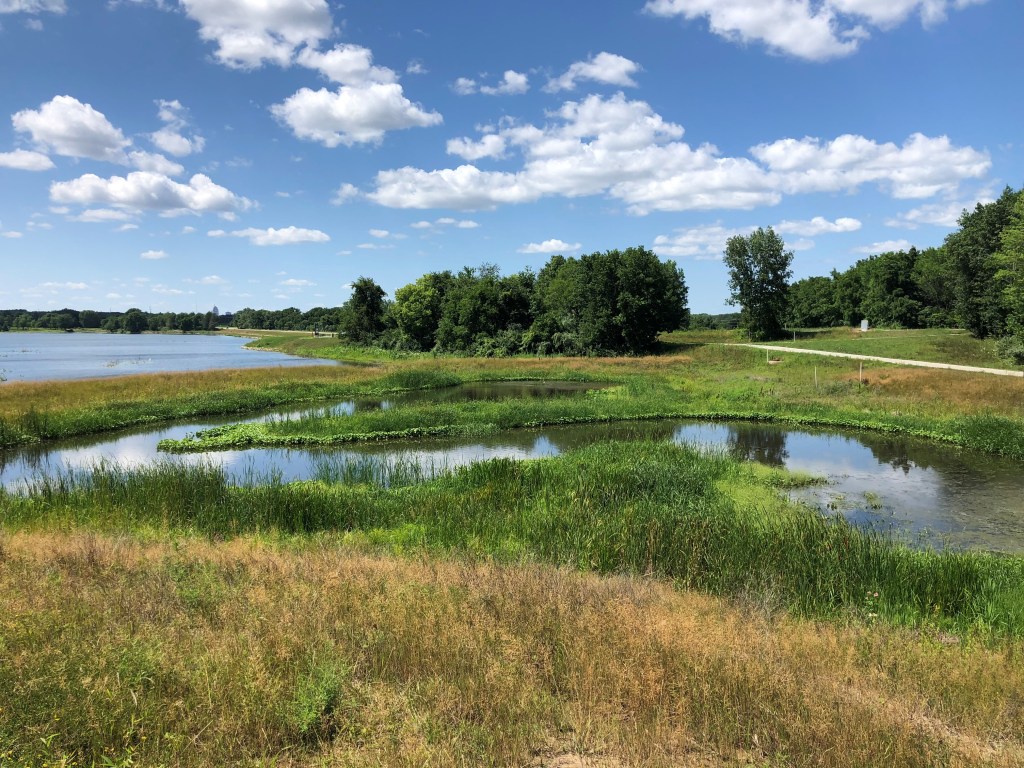Watershed Improvements
Easter Lake's Watershed
Reducing stormwater runoff and pollutant loading throughout the watershed is a critical part of restoring Easter Lake. As new developments have been built around the lake, sediment and pollutant loading has increased. To protect Easter Lake now and into the future, addressing new urban developments is key.
When we talk about restoring Easter Lake, we talk a lot about its watershed. But what is a watershed and why does it matter? If we can understand the location of the Easter Lake watershed, how it functions, and the factors that influence the quality of water within it, we can learn what actions are needed to be taken to restore Easter Lake and protect it into the future.
Watershed Improvement Projects

Stormwater Wetland
In 2016, the Polk Soil & Water Conservation District worked closely with the Polk County Conservation Board and applied for a Water Quality Initiative grant to construct a stormwater wetland and sediment basin forebay within Easter Lake Park. A WQI grant of $72,500 was awarded to the Easter Lake Watershed Project.

Woodland Restoration
The presence of invasive species within the woodland areas of the Easter Lake Watershed has caused the contribution of abnormal amounts of sediment into Easter Lake. The 891 acres of woodland within the watershed are estimated to contribute 36 tons of sediment and 125 pounds of phosphorus each year into Easter Lake decreasing water quality.

Streambank Stabilization
Yeader Creek is the main water source for Easter Lake. Starting near the Des Moines International Airport and Fleur Drive, Yeader Creek runs west to east through the middle of the Easter Lake Watershed all the way to Easter Lake. During rain events, stormwater runs over these impervious surfaces, into storm drains which then outlet into Yeader Creek. During a single storm event millions of gallons of water are rushing through Yeader Creek creating flashy stream flows which can cause large amounts of stream bank erosion.

Three Lakes Estates Detention Ponds
In order to improve long term water quality in Easter Lake, it is necessary to reduce as much sediment entering the lake as possible. One part of this effort includes making sure the detention ponds such as those in the Three Lake Estates area and Easter Lake Drive west of SE 27th Court, are able to retain as much silt as possible. During construction of homes in this area, a significant amount of silt was deposited in these ponds, significantly filling them, thus requiring the need to dredge and remove the silt to restore their function.

Native Prairie Restoration
The conversion Iowa's landscape from cool season grass back to its historical native tall grass prairie, provides compounded benefits to the Easter Lake Watershed. The diverse and rich mix of flowering species not only offers critical pollinator and wildlife habitat all throughout the seasons, but the species found in tall grass prairie have extensive root systems that can sometimes reach 12 feet below the surface! This deep network of roots aids in amending compact and clay-heavy soils, increases infiltration and the uptake of stormwater during rain events and reduces soil erosion by holding soils in place with its interlocking matrix of vegetation. Thanks to thoughtful landowners and City of Des Moines and Polk County park staff, the Easter Lake Watershed has restored over 49 acres back to its former native prairie landscape.







EASTER LAKE WATERSHED PROJECT PARTNERS








